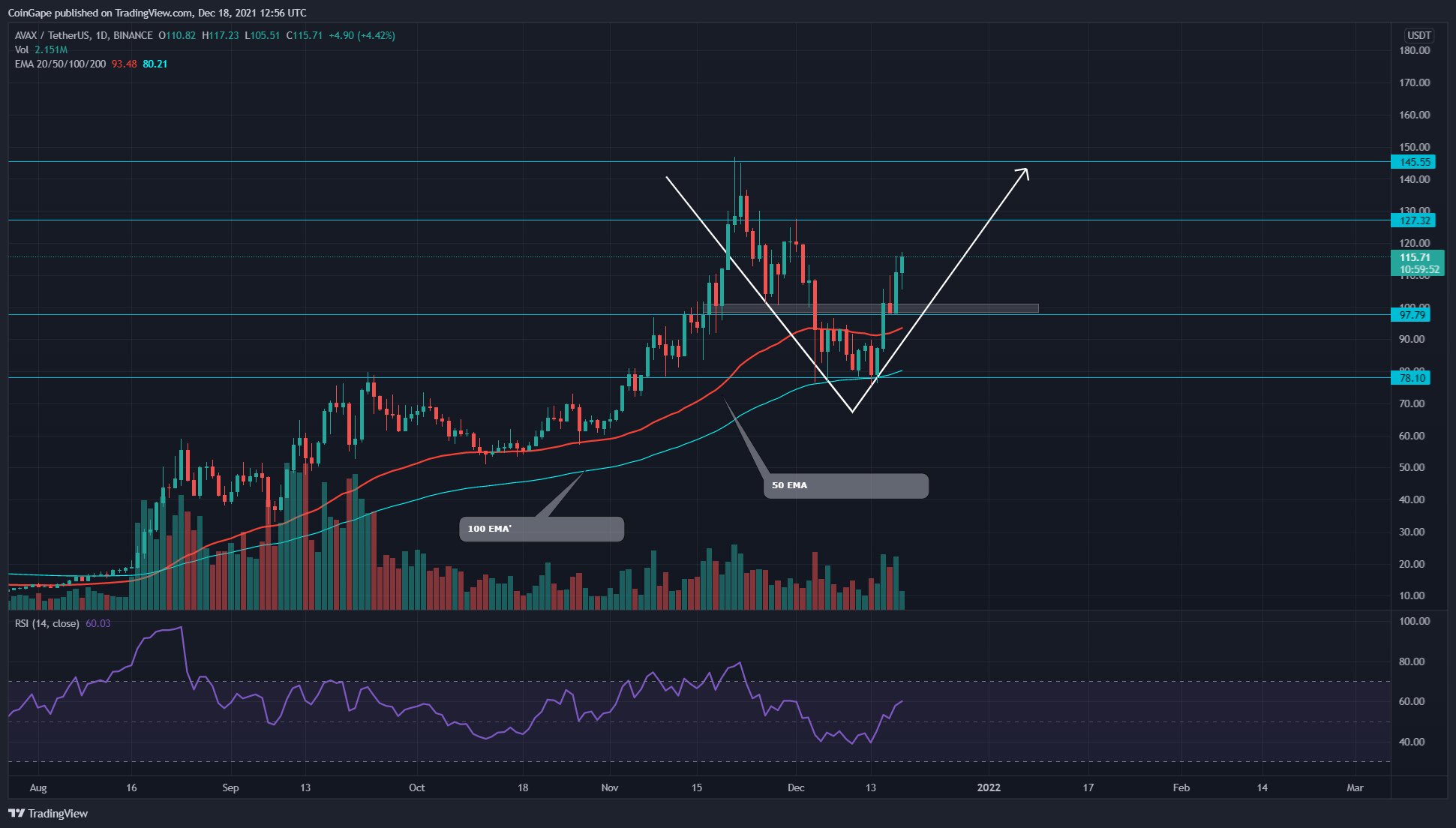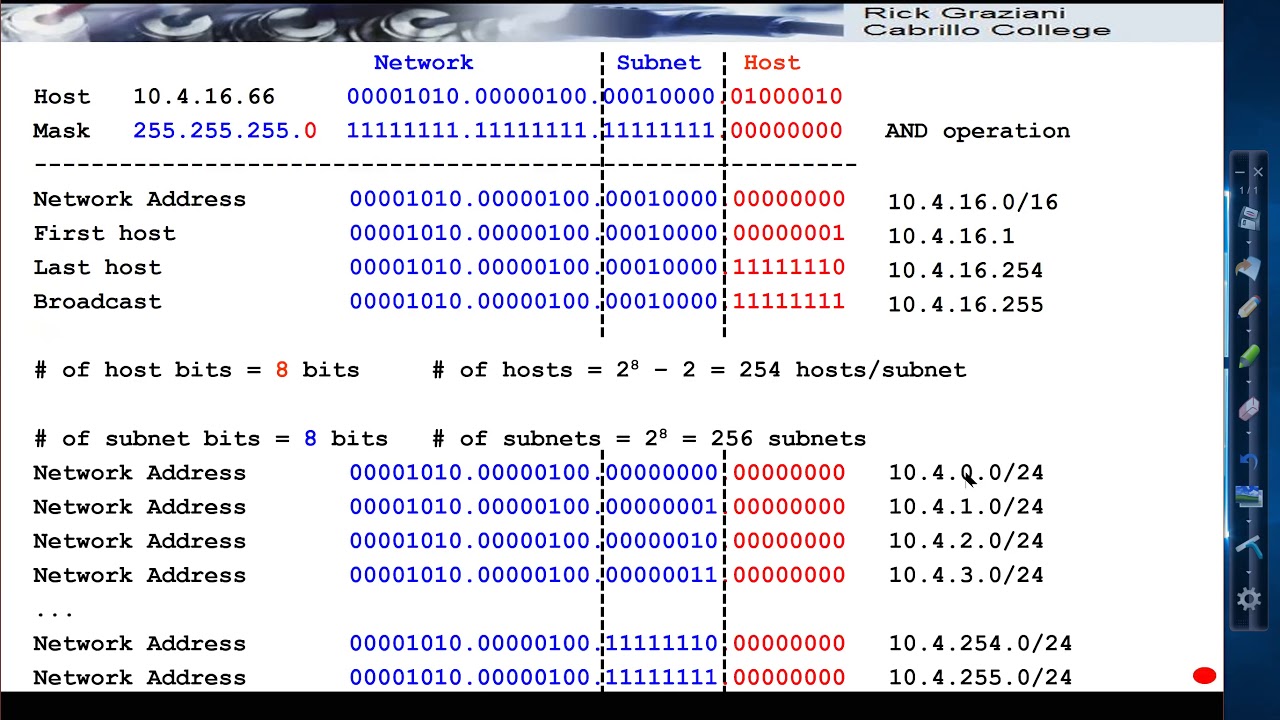Introduction
Welcome to the world of cryptocurrencies, where technological innovation and decentralized financial systems have taken center stage. In this dynamic and rapidly evolving landscape, subnets have emerged as an essential component for optimizing crypto networks, ensuring scalability, and enhancing security.
Subnets play a crucial role in the functioning of cryptocurrencies by organizing and grouping network components into manageable units. In this article, we will explore the concept of subnets in the crypto space, their benefits, and how they can be created and managed effectively.
As the popularity of cryptocurrencies grows, so does the need for scalable and secure networks. Traditional network architectures face limitations in handling the increasing demand and complexity of crypto transactions. Subnets provide a solution by dividing the network infrastructure into smaller, more manageable units, offering several advantages for crypto networks.
In the following sections, we will delve into the specifics of subnets in crypto, discussing their benefits, the process of creating and managing them, and exploring some real-world use cases. By the end of this article, you will have a comprehensive understanding of the significance of subnets and how they contribute to the growth and stability of the crypto ecosystem.
What is a Subnet?
Before diving into the world of subnets in the context of cryptocurrencies, it is important to understand what a subnet is in a broader context. In the field of networking, a subnet is a logical subdivision of an IP network. It is created by dividing a large network into smaller, more manageable parts. Each subnet has its own unique IP address range and can have multiple devices connected to it.
In the realm of cryptocurrencies, subnets serve a similar purpose but with some unique characteristics. In essence, a subnet in the crypto space refers to a subset of nodes or validators that operate together within a network. These subnets can be composed of a specific group of organizations, individuals, or geographic locations.
Subnets in crypto networks are designed to facilitate scalability and improve performance. By dividing the network into smaller subunits, it becomes easier to manage and orchestrate various operations within the system. Each subnet can have its own rules and configurations, allowing for greater customization and flexibility based on the specific needs of the participants.
Furthermore, subnets in the crypto space can enhance the security of the network. By isolating a subset of nodes within a subnet, potential security breaches or attacks can be contained to a smaller portion of the network, limiting the impact and reducing the overall risk.
It is important to note that subnets in the crypto world are not limited to a particular blockchain or cryptocurrency. They can exist across various networks and can be implemented based on the specific requirements of different projects. The decentralized nature of cryptocurrencies allows for the creation and management of subnets that align with the goals and objectives of each network.
Now that we have a clear understanding of what subnets are, let us explore how they are utilized in the context of cryptocurrencies and why they are essential for optimizing network performance and security.
Subnetting in Crypto
Subnetting plays a significant role in the world of cryptocurrencies, enabling more efficient and secure network operations. In crypto networks, subnetting is the process of dividing the network into smaller, interconnected subnets, each with its own set of validators or participants.
One of the primary reasons for subnetting in crypto is scalability. As cryptocurrencies gain popularity and the number of transactions increases, the network needs to handle the growing demand. Subnetting allows for parallel processing and distribution of transactions across multiple subnets, increasing the network’s capacity to handle a higher volume of transactions.
Subnetting also enhances the resiliency and fault-tolerance of the network. By spreading the validators across different subnets, the impact of a single subnet failure or attack is mitigated. Even if one subnet experiences issues, the remaining subnets can continue to operate and secure the network, minimizing disruption and potential vulnerabilities.
Furthermore, subnetting in crypto networks can improve the overall performance and latency. By separating nodes into smaller subnets, communication and data transfer between participants within the same subnet can occur more quickly and efficiently. This localized interaction reduces the time required for consensus and improves the overall responsiveness of the network.
In addition to scalability and performance, subnetting also allows for customization and flexibility within the network. Each subnet can have its own set of rules, configurations, and consensus mechanisms, enabling different groups of validators to operate according to their specific requirements. This flexibility is important for accommodating diverse use cases and ensuring that the network can adapt to evolving needs.
It is important to note that subnetting in crypto networks is not a one-size-fits-all approach. The decision to implement subnets and the specific configuration of subnets can vary depending on the blockchain protocol, project requirements, and network architecture. Each network may have its own rules and guidelines for subnetting, reflecting the unique characteristics and objectives of the crypto project.
Now that we understand the significance of subnetting in crypto networks, let us explore the benefits that subnets bring to the table and why they are an integral part of the crypto ecosystem.
Benefits of Subnets in Crypto
Subnets offer numerous benefits in the context of cryptocurrencies, enhancing the scalability, security, and flexibility of the network. Let’s explore some of the key advantages of utilizing subnets in the crypto ecosystem.
Scalability: One of the primary benefits of subnets in crypto networks is improved scalability. By dividing the network into smaller subunits, subnets enable parallel processing of transactions. This means that multiple subnets can process transactions simultaneously, increasing the overall capacity of the network and accommodating a higher volume of transactions.
Security: Subnets play a crucial role in strengthening the security of crypto networks. By isolating a subset of nodes within a subnet, potential security breaches or attacks can be contained. If a specific subnet experiences a security issue, the impact is localized to that subnet, minimizing the risk to the entire network. Subnets also allow for the implementation of customized security measures, tailored to the specific needs and requirements of each subnet.
Performance: Subnets contribute to better network performance in crypto systems. By dividing the network into smaller subunits, communication and data transfer between participants within the same subnet become faster and more efficient. This localized interaction reduces latency and improves the overall responsiveness of the network, providing a more seamless user experience.
Customization: Subnets offer a high level of customization and flexibility within crypto networks. Each subnet can have its own set of rules, configurations, and consensus mechanisms. This allows different groups of validators to operate according to their specific requirements and preferences. Subnets can cater to different use cases, protocols, or geographic regions, ensuring that the network adapts to diverse needs and fosters innovation.
Manageability: Subnetting makes the management of crypto networks more streamlined and efficient. By dividing the network into smaller subunits, network administrators can focus on managing and monitoring each subnet separately. This simplifies network management tasks, such as software updates, bug fixes, and performance optimizations, as they can be targeted at a specific subnet rather than the entire network.
Fault-Tolerance: Subnets enhance the fault-tolerance of crypto networks. If one subnet experiences issues or disruptions, the impact is limited to that specific subnet, preventing it from affecting the entire network. This decentralized approach reduces the risk of a single point of failure, increasing the resilience and overall stability of the network.
Overall, subnets bring numerous benefits to crypto networks, enabling scalability, improving security, enhancing performance, providing customization, simplifying management, and increasing fault-tolerance. These advantages make subnets a crucial component for the growth and development of cryptocurrencies in the ever-evolving digital landscape.
How to Create a Subnet
Creating a subnet in a crypto network involves several steps to ensure the seamless integration of nodes and validators into a cohesive and secure unit. Let’s explore the process of creating a subnet in the crypto space.
1. Define the Purpose: Start by identifying the specific purpose or objective of the subnet. Determine the criteria for grouping nodes together, whether it’s based on geographical location, organizational affiliation, or other defining factors. Clearly define the goals and requirements for the subnet to guide the creation process.
2. Design the Subnet Parameters: Determine the network parameters for the subnet, including the IP address range, subnet mask, and any specific configurations or customizations needed. This will ensure that the subnet operates within its designated boundaries and adheres to the desired specifications.
3. Select Validators: Choose the validators or participants that will be part of the subnet. Consider their reputation, reliability, and expertise in the crypto network. It is essential to have a diverse group of validators within the subnet to ensure decentralization and prevent centralization of power.
4. Establish Communication Protocols: Define the protocols and mechanisms for communication and data transfer within the subnet. Determine the consensus algorithm or mechanism that the validators will adhere to and establish the rules for node interaction, message propagation, and transaction validation within the subnet.
5. Set up Network Infrastructure: Configure and set up the necessary network infrastructure for the subnet. This includes deploying the required nodes, creating connections, and configuring network devices such as routers and switches. Ensure that the subnet is properly connected and isolated from other subnets or networks for enhanced security and efficient operations.
6. Test and Validate: Before fully integrating the subnet into the crypto network, conduct thorough testing and validation. This includes verifying network connectivity, running performance tests, and ensuring that the subnet functions as intended. Address any issues or inconsistencies that arise during the testing phase.
7. Integrate the Subnet: Once the subnet has been successfully tested, integrate it into the larger crypto network. Establish connections between the subnet and other relevant subnets or network components. Ensure that the subnet is properly identified and recognized by the network for seamless communication and cooperation between subnets.
8. Monitor and Maintain: Regularly monitor and maintain the subnet to ensure its optimal functioning. Keep track of performance metrics, identify and resolve any issues or bottlenecks, and implement necessary updates or improvements as required. Regularly review and update the parameters of the subnet based on evolving network needs.
Creating a subnet involves careful planning, configuration, and integration to ensure its successful incorporation into the crypto network. By following these steps, network administrators and stakeholders can establish subnets that enhance network scalability, security, and performance, contributing to the overall growth and stability of the crypto ecosystem.
Managing and Monitoring Subnets
Once subnets are created within a crypto network, effective management and monitoring are crucial to ensure their optimal performance and security. Let’s explore some key aspects of managing and monitoring subnets in the crypto ecosystem.
1. Network Monitoring: Implement comprehensive network monitoring tools and systems to track the performance and health of each subnet. Monitor metrics such as latency, throughput, and resource utilization to identify any potential issues or bottlenecks. Regularly review these metrics to proactively address any network-related challenges.
2. Security Measures: Establish robust security measures to protect subnets from potential threats. Implement firewall rules, intrusion detection systems, and encryption protocols to safeguard the subnet’s integrity and confidentiality. Regularly audit and update security configurations to stay ahead of emerging vulnerabilities and security risks.
3. Maintenance and Upgrades: Regularly maintain the subnet infrastructure by applying software updates, patches, and bug fixes. Stay up-to-date with the latest advancements and developments in the crypto space to enhance the performance and security of the subnet. Plan and execute upgrades or expansions as the network grows to ensure scalability and meet evolving demands.
4. Documentation and Configuration Management: Maintain comprehensive documentation of subnet configurations, settings, and procedures. This documentation serves as a reference for network administrators and aids in troubleshooting and resolving issues. Implement sound configuration management practices to track changes and maintain version control to avoid misconfigurations or inconsistencies.
5. Coordination and Collaboration: Foster effective coordination and collaboration among subnet stakeholders, including validators, node operators, and network administrators. Establish regular communication channels, such as forums or chat groups, to share updates, resolve issues, and exchange knowledge. Encourage active participation and collaboration within the subnet community to leverage collective expertise and drive continuous improvement.
6. Performance Optimization: Continuously analyze subnet performance and identify opportunities for optimization. Monitor resource utilization, identify any bottlenecks, and make necessary adjustments to improve efficiency. Stay informed about new technologies, algorithms, or protocols that could enhance the subnet’s performance and scalability.
7. Scalability Planning: Anticipate future growth and scalability requirements for the subnet. Plan and strategize subnet expansion to accommodate increased network activity. Monitor network traffic patterns and user demands to make informed decisions about scaling resources and infrastructure.
8. Ongoing Evaluation: Regularly evaluate the effectiveness and efficiency of subnets within the crypto network. Review subnet performance, security incidents, and user feedback to identify areas of improvement. Use this feedback to refine subnet configurations, security measures, and operational practices for better overall network performance.
Effective management and monitoring of subnets are essential to ensure optimal performance and security within the crypto ecosystem. By implementing robust monitoring tools, following security best practices, maintaining documentation, fostering collaboration, optimizing performance, and planning for scalability, network administrators can ensure the smooth functioning and long-term success of subnets in the crypto network.
Use Cases for Subnets in Crypto
Subnets in the crypto space have a wide range of use cases, demonstrating their versatility and applicability to various scenarios. Let’s explore some key use cases where subnets are employed in the crypto ecosystem.
1. Geographical Subnets: Geographical subnets are a common use case in crypto networks. Subnets can be created based on geographic regions to facilitate localized transactions and reduce latency. This approach is particularly useful in global networks, enabling faster and more efficient transactions within a specific region while maintaining connectivity with the larger network.
2. Specialized Subnets: In certain crypto ecosystems, specialized subnets are created to cater to specific use cases or industries. For example, there can be subnets dedicated to decentralized finance (DeFi), gaming, supply chain management, or identity verification. These specialized subnets allow for customized functionalities, consensus mechanisms, and rules tailored to the specific requirements of each industry or use case.
3. Private Subnets: Private subnets are designed to ensure privacy and confidentiality within a crypto network. These subnets restrict access to a select group of authorized participants, providing a secure environment for sensitive transactions or confidential information. Private subnets are especially relevant for enterprise blockchain applications, where data privacy and control are paramount.
4. Test and Development Subnets: Subnets are also extensively used for testing and development purposes. Developers can create dedicated subnets to experiment with new features, test smart contracts, and simulate real-world scenarios. These test and development subnets provide a safe environment for innovation and allow for the discovery and resolution of potential issues before deploying changes or updates to the production network.
5. Governance Subnets: Governance subnets play a critical role in decentralized governance within crypto networks. These subnets are dedicated to consensus-building, voting, and decision-making processes. Validators within the governance subnet participate in governance proposals, voting on protocol upgrades, and shaping the future direction of the network. Governance subnets ensure the decentralized nature of decision-making and foster community involvement in the evolution of the crypto ecosystem.
6. Shard Subnets: Sharding is a technique that leverages subnets to improve scalability in crypto networks. Shards are created as subnets, each processing a subset of transactions or smart contracts. This allows for parallel processing and improves the overall capacity of the network. Sharding enables crypto networks to handle a higher volume of transactions, enhancing scalability without compromising security or decentralization.
7. Interoperability Subnets: Interoperability subnets are designed to facilitate communication and data exchange between different blockchain networks. These subnets enable seamless interoperability and cross-chain transactions, allowing tokens or assets to be transferred between different blockchains. Interoperability subnets play a crucial role in fostering collaboration and expanding the utility of cryptocurrencies across multiple networks.
8. Research and Academic Subnets: Research and academic subnets provide a dedicated environment for blockchain research, innovation, and education. These subnets allow researchers, academics, and students to experiment with new concepts, conduct experiments, and contribute to the advancement of blockchain technology. Research and academic subnets foster collaboration between academia and industry, driving innovation and knowledge dissemination in the crypto space.
These are just a few examples of the use cases for subnets in the crypto ecosystem. The flexibility and versatility of subnets enable them to be employed in diverse scenarios, providing customized solutions and optimizing network performance and security for specific industries, regions, or functionalities in the ever-evolving world of cryptocurrencies.
Conclusion
Subnets have become an indispensable component of the crypto ecosystem, providing a scalable, secure, and customizable solution to optimize network operations. Subnetting in the crypto space involves dividing the network into smaller, interconnected subnets, each with its own set of validators or participants. By doing so, subnets enhance the scalability, security, and flexibility of crypto networks.
We explored the benefits of subnets in the crypto ecosystem, including improved scalability, enhanced security, better performance, customization, simplified management, and increased fault-tolerance. Subnets allow for parallel processing of transactions, localize communication for faster interactions, and contain potential security breaches within a specific subnet, leading to a more efficient and secure network infrastructure.
Managing and monitoring subnets are crucial to ensuring their optimal performance and security. Network monitoring, security measures, maintenance, documentation, coordination, performance optimization, scalability planning, and ongoing evaluation are key aspects of effective subnet management. By implementing best practices in managing and monitoring subnets, network administrators can maintain a stable and secure network environment.
Subnets have a variety of use cases in the crypto space, including geographical subnets, specialized subnets, private subnets, test and development subnets, governance subnets, shard subnets, interoperability subnets, and research and academic subnets. These use cases showcase the versatility and applicability of subnets in different scenarios, catering to the diverse needs of the crypto ecosystem.
In conclusion, subnets in crypto networks have revolutionized the way cryptocurrencies operate. They provide a scalable and secure solution, enhancing performance and security while allowing for customization and flexibility. By effectively managing and monitoring subnets, crypto networks can achieve optimal performance, ensure network security, and meet the evolving demands of the crypto landscape.

























